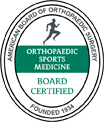
Running is reported as one of the most popular types of physical activity worldwide and offers numerous health benefits. However, running related injury incidence is staggering. Up to 92% of those engaging in running will experience a running related injury. Running related injury will occur when the load capacity of the runner’s musculoskeletal system has been exceeded by the structure specific training load. While runners naturally build up strength in their legs, but without a strength training regimen, the hips and core are weak and the body as a whole is vulnerable to injury.1
We often think of exercise in two separate categories: cardio and strength. The two may exercise different parts of the body, but engaging in both types of training is crucial to injury prevention. Strength training can also improve muscle efficiency, which will improve running stamina and power.
When running, the body can experience forces equal to three times the body weight. This requires a significant amount of strength and stability to endure such force, especially in the hips and core. Our muscles act as shock absorbers and reduce the impact of the ground reaction force on the joints. Therefore, it is important to build up strength in the core and lower body to prevent injury.
Not only is important to focus on strength training, but plyometric training for the lower body will also help improve the elasticity of your soft tissue and force absorbing capacity. The main muscle groups to target when strength training for running related health will include the main musculature involved with absorbing force and providing a stable base for running. This will include the quadriceps, gastrocnemius, soleus, hamstrings, gluteals, and core. Effective exercises to target these regions and types of exercise can include:
- Squats and Lunges
- Deadlifts
- Calf raises with the knees straight and knees bent
- Single leg bridges
- Plank variations
- Box jumps
- Leg drops
The Department of Health and Human Services recommends these strength training guidelines for healthy adult runners: Exercise all major muscle groups at least two times a week. Body weight strength training can be just as effective as adding resistance to these movements.2
Adding strength training to your fitness plan will not only improve your overall health, but it will make you a stronger, safer runner.
Milan M. DiGiulio, M.D. offers comprehensive orthopedic care for you and your entire family, specializing in Sports Medicine and arthroscopic surgery of the shoulder and knee. Dr. DiGiulio performs over 200 arthroscopic shoulder and knee surgeries each year, using the most advanced surgical technology. Dr. DiGiulio is an advocate of non-invasive, non-surgical treatment options such as Physical Therapy and Orthobiologics.
1 https://www.centerfoundation.org/2019/05/
2 https://www.mayoclinic.org/healthy-lifestyle/fitness/in-depth/strength-training/art-20046670









